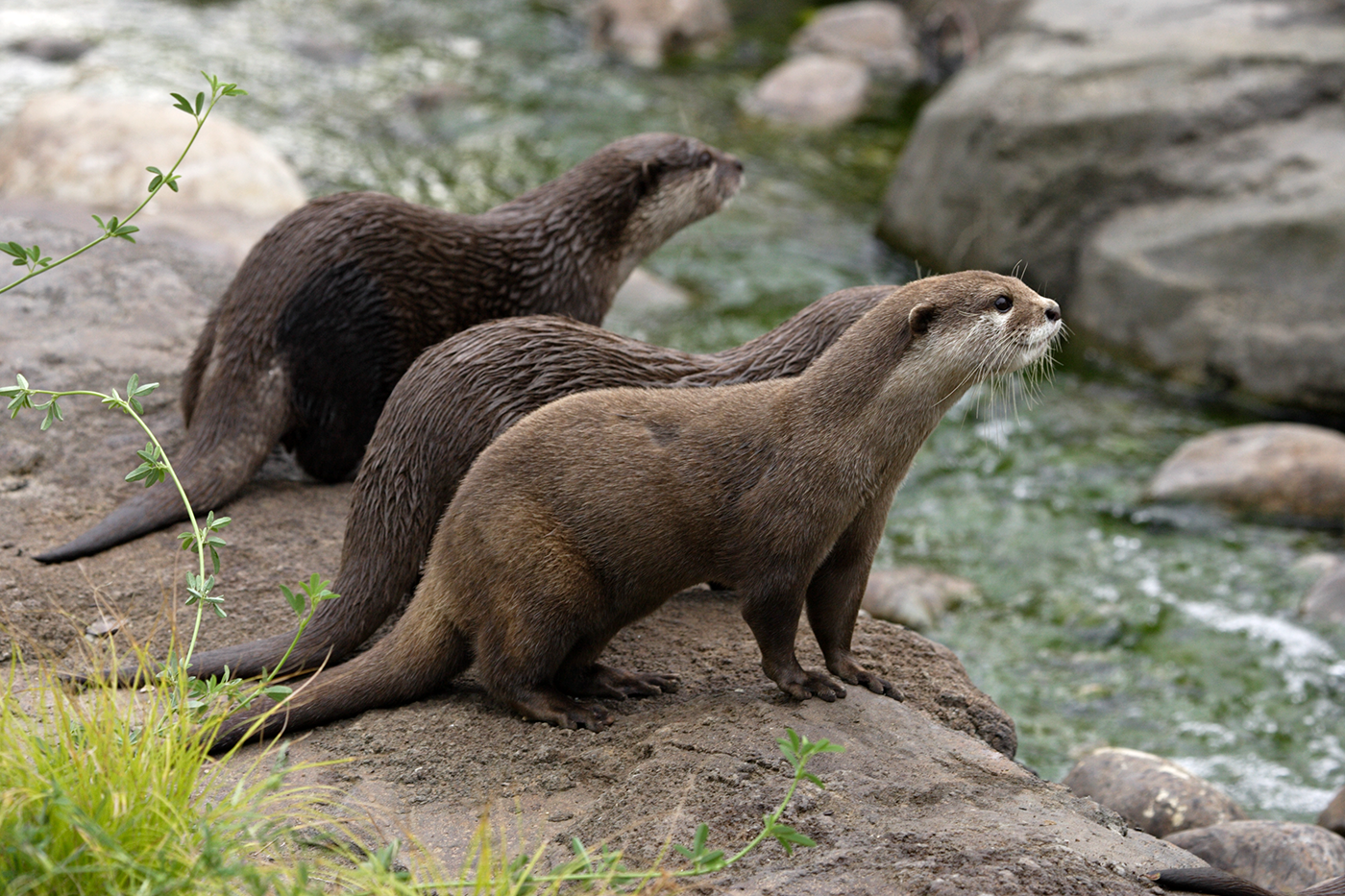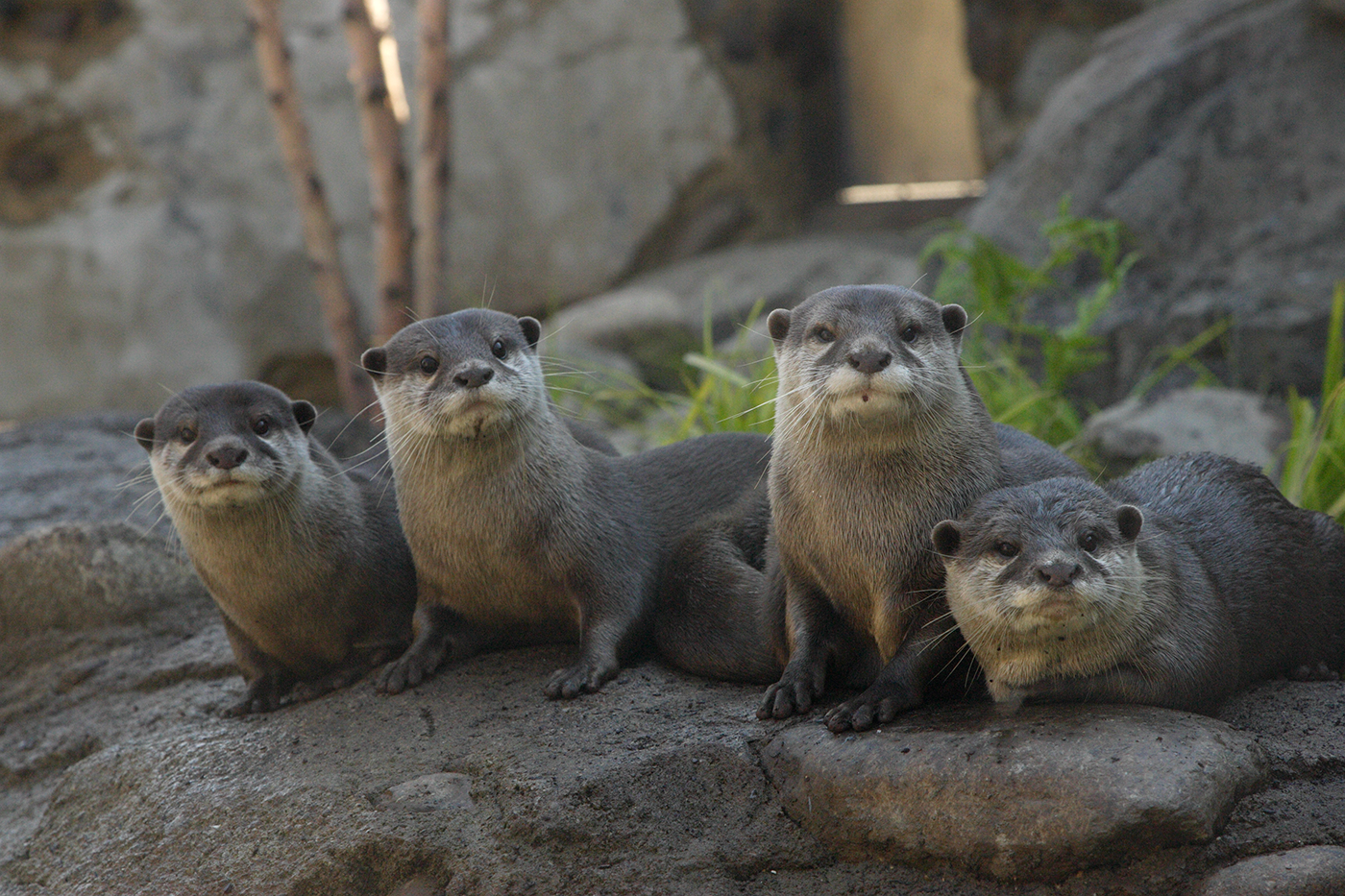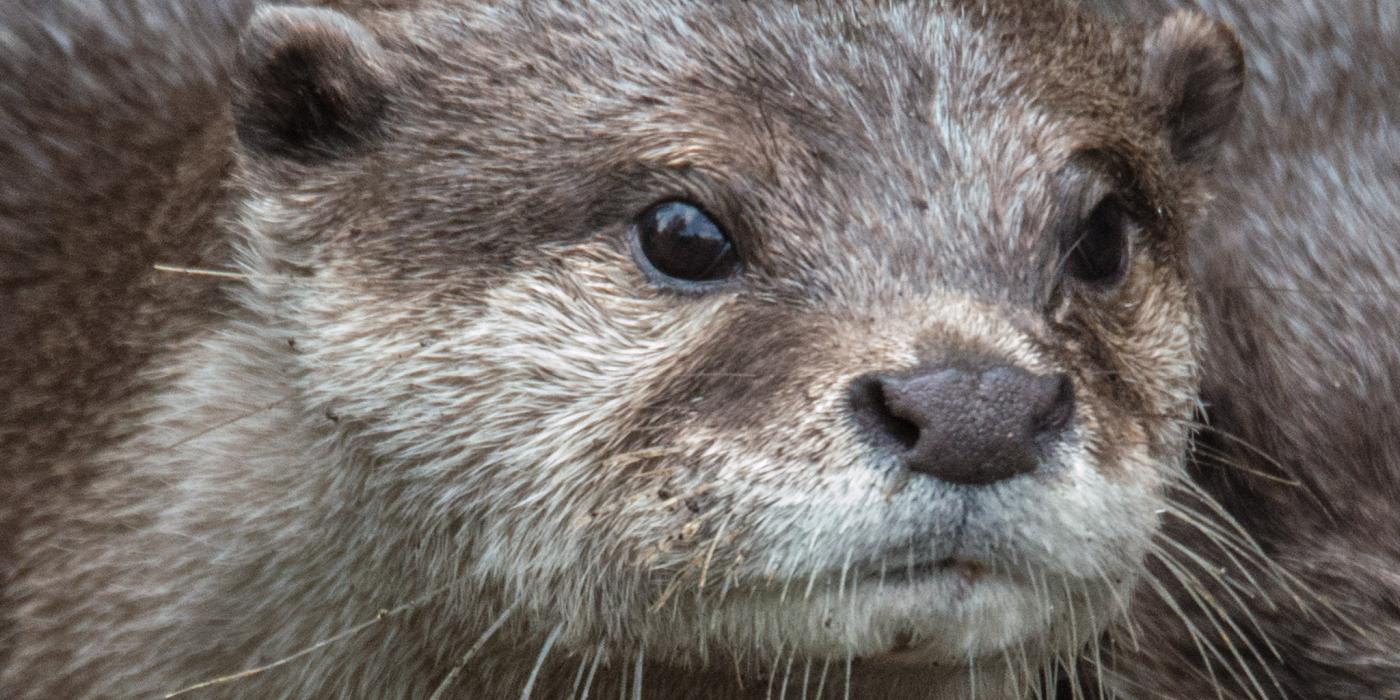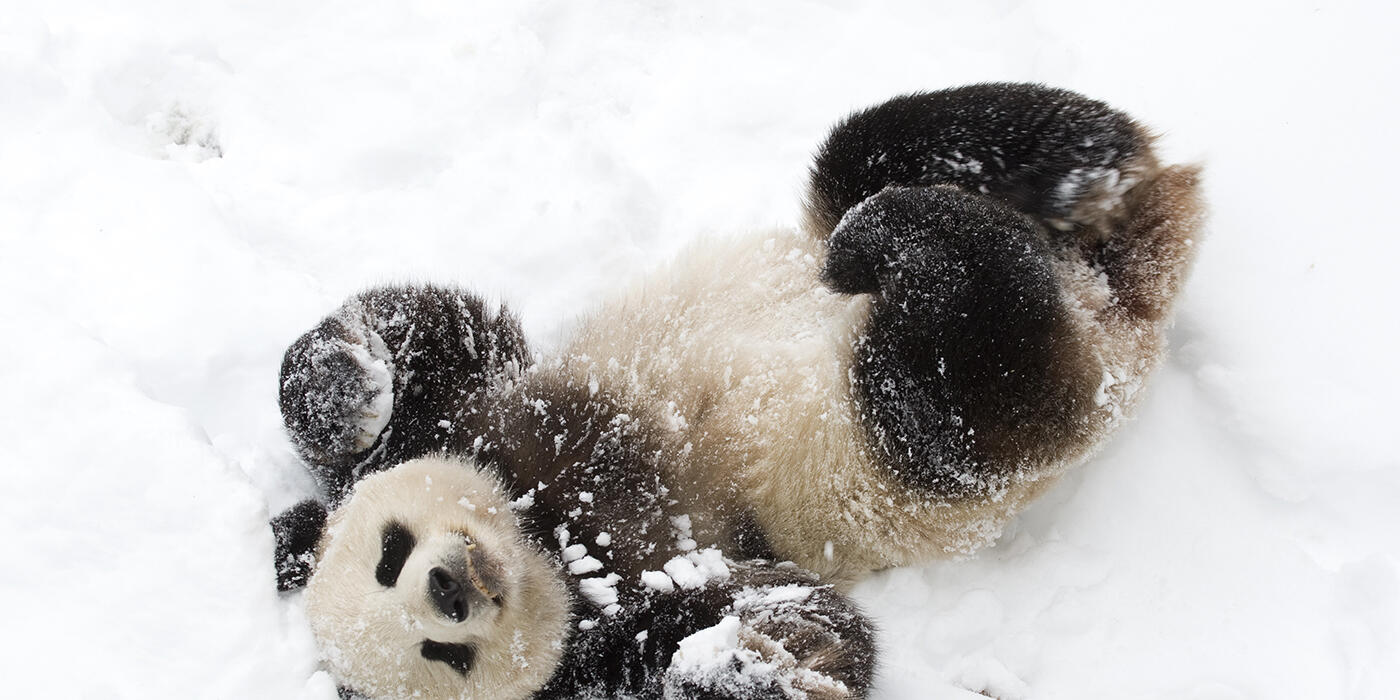Meet the Asian Small-Clawed Otter, an Adorable and Social Carnivore

On the rocky banks of a trickling freshwater stream, the otters are on the move.
The larger of the pair bounds across the rocks, the smaller following closely behind. The duo leap into the water, splashing and tumbling towards the muddy bottom. Before long, they begin to tussle. The pair twirl and somersault their way back up to the surface —and then stop. An unfamiliar noise on land has caught their attention. They leap out of the water and bound off into the grass to investigate.
These are Asian small-clawed otters, at home in their streamside habitat at the Smithsonian’s National Zoo.
There’s a lot to discover about these energetic little predators. Here’s what you need to know:
Small bodies, smaller claws
Like their name suggests, Asian small-clawed otters have short nails that don’t protrude beyond the edges of their fingers. This adaptation makes it easier to forage and dig through mud and sand. Their flexible paws tap and feel for food, quickly snatching whatever they find hiding in the sediment.
See Asian small-clawed otters explore their environment at the Smithsonian’s National Zoo and Conservation Biology Institute:
Where do Asian small-clawed otters live?
Wild populations can be found throughout southeast Asia, extending from eastern India through Thailand and Vietnam to southern China, as well as parts of Indonesia and even Taiwan.
Highly adaptable, Asian small-clawed otters can thrive in a variety of freshwater aquatic habitats, from swamps and mangrove forests to mountain rivers and shallow coastal wetlands. They prefer to avoid human-dominated areas, but encroaching development means they can increasingly be found in agricultural settings, like rice paddies.
They are especially fond of climbing, playing, and resting on rocks and fallen trees. But if a predator approaches, these nimble animals can scramble into the water at a moment’s notice.

Smithsonian/Meghan Murphy
What do Asian small-clawed otters look like?
Like other species in the otter family, these little creatures have slender, streamlined bodies. They are covered in dark brown fur, often with a lighter patch along their faces and bellies. Features like webbed paws, small ears, long whiskers, and muscular tails are special adaptations for a semi-aquatic lifestyle.
These animals sport a double-layered coat, which helps them stay warm and dry underwater. Asian small-clawed otter coats are incredibly dense, containing around 450,000 hairs per square inch of fur. (For comparison, the average person has 100,000 hairs on their head.)
How do they measure up to other otters?
Asian small-clawed otters stand out for their tiny stature—as the smallest type of otter, they weigh between 4 and 10 pounds and reach 2 to 3 feet long.
Meanwhile, the longest otter species, South America’s giant river otter, can reach over 5 feet long. The heaviest otter, the sea otter, can reach 4 feet long and weigh up to 100 pounds.
Play together, stay together
Asian small-clawed otters are very social and very vocal. They live in extended family groups of up to 20 individuals, centered around a monogamous breeding pair and several generations of their offspring. These groups form strong bonds that can last for their entire lives. Older siblings will often step in to help their parents raise the youngest generation. Families sleep together in burrow-like nests near the water’s edge.
Watch Asian small-clawed otters search for nesting materials in this video from the Smithsonian’s National Zoo and Conservation Biology Institute:
It’s about family
Family groups maintain their bonds by calling out loudly and frequently. They use a repertoire of squeaks, chirps, barks and growls to communicate everything from greetings and food discoveries to alerts when a predator is nearby.
Asian small-clawed otter families love to wrestle and play with each other. They are often seen sliding into the water, juggling small rocks and chasing balls of dirt. Sometimes, an otter will store a favorite rock in a pocket under its arm to play with later.
Territories between otter groups don’t usually overlap. Family groups establish territories, taking over a chunk of river space and claiming it as their own through scent markings. If another group enters the territory, the dominant group will usually chase out the weaker one.

Smithsonian/Meghan Murphy
What role do Asian small-clawed otters play in their environment?
These small carnivores play an important role in stabilizing life in their native freshwater wetlands. In the wild, Asian small-clawed otters’ favorite meals are crabs, amphibians and mollusks, and their voracious appetites keep populations of these animals from overexpanding.
Scientists consider Asian small-clawed otters to be an “indicator” species. Because the otters can only thrive in habitat areas with clean water, lots of prey and low levels of pollution, their presence is a sign that the ecosystem is capable of supporting healthy animal populations. If the otters are in trouble, other species will share their fate.

Smithsonian/Meghan Murphy
What threats are Asian small-clawed otters facing?
Wild populations are in decline. Estimates suggest the total number of Asian small-clawed otters fell by at least 30% in the past 30 years. They are classified as ‘Vulnerable’ on the International Union for Conservation of Nature (IUCN) Red List of Threatened Species.
The main threat to Asian small-clawed otters is habitat loss. In many parts of their range, wetlands are being destroyed to make room for farmland and roads. Asian small-clawed otters are also persecuted by human farmers, who consider them to be agricultural pests.
A rising threat: the illegal pet trade
Unfortunately, otters’ cuteness and charming personalities put them at risk of illegal capture. Increasingly, Asian small-clawed otters are facing pressure to fuel the exotic wildlife trade. Poaching and fur trapping are also major threats.
Considering keeping an Asian small-clawed otter as a pet? Don’t. These animals do not make good pets, and will not thrive in human care outside of specialized facilities like accredited zoos and wildlife rehabilitation centers.
How does the Smithsonian care for Asian-small clawed otters?
The Smithsonian’s National Zoo in Washington, D.C., is home to two pairs of Asian small-clawed otters. Their streamside habitat area is located at the Zoo’s Asia Trail exhibit, which showcases unique Asian animals like the sloth bear, clouded leopard, and giant panda.
Learn how Asia Trail keepers provide enrichment and play opportunities for the otters:
Related Species:



